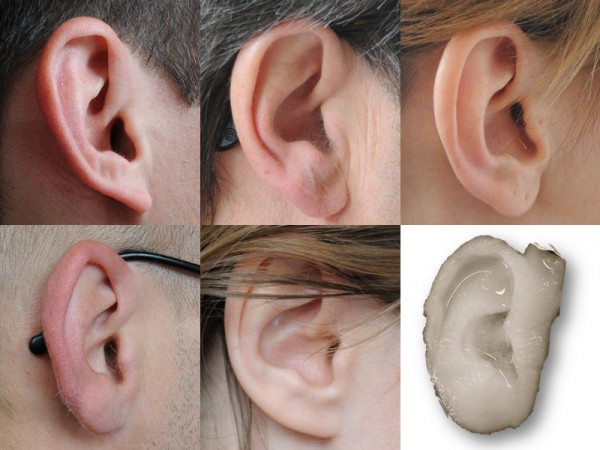Realistic Ears Made of Bacterial Nanocellulose
(ETH Zurich, June 03, 2013)
 Like fingerprints, ears are unique to each individual. These complex structures are difficult to replace if lost through disease or accident. Since the auricle (outer ear) consists of cartilage without nerves or blood vessels, it cannot regenerate after injury. Ear reconstruction is especially challenging because patients want the replacement to resemble their original one in both looks and feel. ETH researchers have developed realistic auricle implants by testing and mapping the mechanical properties of ear cartilage, then reproducing them using biomaterial – a web of nanocellulose fibers spun by Gluconacetobacter xylinus bacteria. This flexible, well-tolerated material provides scaffolds for tissue regrowth and implants to support the new auricle. Clinical applications to reconstruct ears, and potentially other cartilage types, are expected soon.
Like fingerprints, ears are unique to each individual. These complex structures are difficult to replace if lost through disease or accident. Since the auricle (outer ear) consists of cartilage without nerves or blood vessels, it cannot regenerate after injury. Ear reconstruction is especially challenging because patients want the replacement to resemble their original one in both looks and feel. ETH researchers have developed realistic auricle implants by testing and mapping the mechanical properties of ear cartilage, then reproducing them using biomaterial – a web of nanocellulose fibers spun by Gluconacetobacter xylinus bacteria. This flexible, well-tolerated material provides scaffolds for tissue regrowth and implants to support the new auricle. Clinical applications to reconstruct ears, and potentially other cartilage types, are expected soon.
